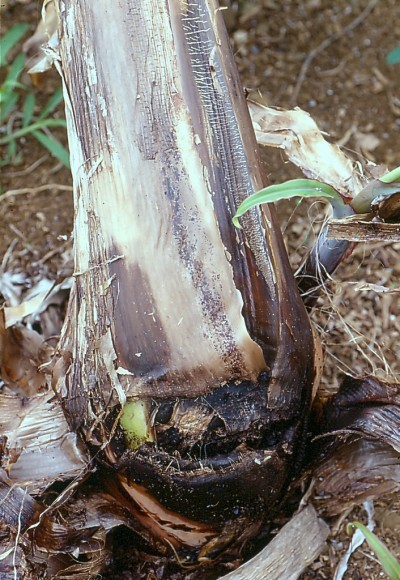






Bacterial soft rot disease is an infection that can devastate a crop of fleshy vegetables such as carrots, onions, tomatoes and cucumbers, though it is most widely known for its attacks on potatoes. Soft rot disease is most easily recognized in these vegetables by soft, wet, cream to tan colored flesh surrounded by a dark brown to black ring. When conditions are right, these necrotic spots begin on the outside or skin of the potato and works inward. Initially, there is no odor, but as the soft rot disease progresses, secondary infections invade and the blackened potato emits a foul smell. These symptoms are similar in most other affected plants as well with small, water-soaked, translucent spots on leaves, stems or underground parts.
Soft rot bacteria, or Erwinia cartovorum is, unfortunately, found everywhere. It survives in soil and water sources, even oceans, and is found all over the globe. Almost all commercial crops are affected to some degree by soft rot. Bacteria in the home garden can be introduced by insects, wind blown rain, or leftovers from the previous year’s crop. One of the most common culprits on potatoes is the seed potato itself.
The soft rot bacteria can be found on almost all tubers but most commonly affects potatoes. The infection occurs through skin damage due to growth cracks or injury and high soil temperatures combined with excess water provides the perfect growing conditions. Very often, signs of bacterial soft rot will not occur until after harvest. This is largely due to improper handling of the newly harvested potatoes.
There is no completely effective soft rot treatment, but there are things you can do to minimize the damage.
Once soft rot bacteria have infected plants in the garden, there is no effective treatment. You will need to remove and dispose of infected plants as soon as possible to avoid further damage to other plants.
Prevention is key in controlling soft rot bacteria. The following steps can be taken to help avoid this problem in the garden:
Copyright © www.100flowers.win Botanic Garden All Rights Reserved